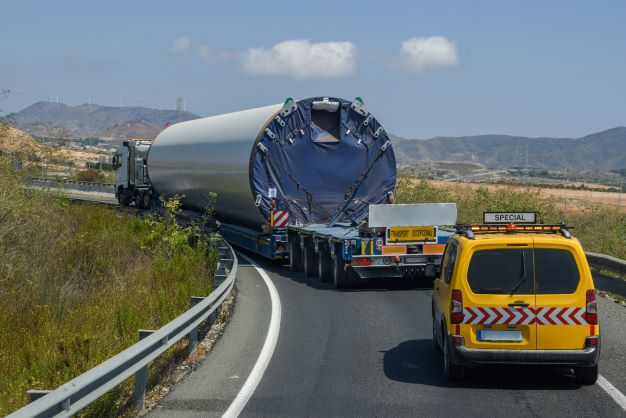
16 September 2022
Transportation of large-scale cargoes
Every industry has its hallmark challenges: tasks that are far removed from daily routine and require a unique approach; challenges that can be met by few and are remembered for a long time. In the TSL industry, such challenges include organizing the delivery of products and assemblies of very large size. How is large-scale cargo transportation handled?
The most spectacular element of the logistics process is transportation, and that is what attracts the attention of the media and casual observers. Meanwhile, behind every trip, cruise or flight lies the titanic work of logisticians, who arrange every aspect and every stage of the task.
Transportation of large-scale cargoes
Typically, the most extreme cargoes include whole industrial devices or their parts that have to be made in their entirety in a factory: pressure vessels for nuclear reactors, tanks for chemical plants, blades for wind turbines, structural components for bridges, fuselages and wings for airplanes, space vehicles, etc. The list is long and open-ended, as people tend to design bigger and bigger structures, breaking new records for efficiency, precision and size.
Complicated preparation process
Any “record-breaking”, oversize transport involves time-consuming and complex preparations that include, but are not limited to:
- planning the loading and unloading procedure,
- proposing routes for the sections where road transport will be used,
- verification of the route in the field (measuring the actual width of the available road, the height of wires routed over the roadway, the width and height of tunnels and overpasses, the load capacity of bridges, etc.).
Sometimes you also need to develop a project for adjusting and securing the route: temporary hanging or dismantling of cables, removal of obstacles on the roadsides (road signs, posts, etc.), ad hoc strengthening of crossings. These modifications must be priced, their approvals must be obtained from road managers and authorities, and technical documentation must be prepared. In the case of transporting oversized cargo, for which the crossing route must be adjusted, additional police assistance is often required. Transport is carried out at night or when it is least disruptive to the environment and other road users. If the entire route cannot be covered at once, it becomes necessary to designate and prepare rest stops for the convoy.
In special cases – for example, when repeated transport is expected (e.g., between a factory and a seaport or river port, from a subcontractor to the final assembly site, to an area of industrial installation construction, etc.) – efforts are made to reconstruct the infrastructure along the route so as to facilitate transportation and keep costs at a reasonable level.
In many cases, these costs are so high that they are a significant part of the total cost of manufacturing the device being transported. For example, it cost about $3 million to transport the $30 million 150-meter electromagnet ring for the gas pedal at the US Fermilab laboratory. The device covered a distance of 5149 kilometers by road.
Weight records in logistics
In road transport, the weight record was broken in 2012 in Saudi Arabia, by transporting a component of a seawater distillation plant weighing 4,800 tons. The trailer used in this transport had 172 axles.
An interesting aspect of oversize cargo logistics is the design and construction of specialized means of transportation. The largest, most original vessel, named BOKA Vanguard, can carry cargo that weighs up to 110,000 tons and is longer than its own length of 275 meters.
Air transport has recently lost its leader when it comes to size. The Russians destroyed the only existing copy of the AN-225 Mriya aircraft in Ukraine, which could carry a cargo of just over 253 tons. Currently, cargo of the largest size and weight can be carried by aircrafts:
- Boeing Dreamlifter – a modified Boeing 747-400, used to transport fuselage parts of the Boeing 787 Dreamliner between Italy, Japan and the US,
- Airbus BelugaXL (A330-743L), used for a similar purpose by the Airbus Company.
Trust the TSL specialists
Any transportation, and especially that involving oversized cargo, requires the expertise of logistics specialists. By entrusting their goods to them, the customer is assured that the cargo will arrive safely and on time at the indicated place, and the entire logistics process will run smoothly, taking into account the specifics of the transported goods, customs or road formalities, with proper planning of the appropriate route, etc. In this context, the knowledge and experience of TSL specialists are one of the most important elements of the entire logistics process.
PS
Take a look at one of the large-scale transports that we have carried out:
















